Low-permeability surface mulch for higher soil leaching efficiency
Soil salinization is the accumulation of soluble salinity in soil that causes the deterioration in soil properties and quality. Around the globe, more than one billion hectares of land in over 100 countries is salt-affected. China is world’s third largest country in salt-affected land. It is reported that China’s salinized land is around 99.13 million hectares, accounting for almost 10% of the global total. At present, China has around 36 million hectares of land under salinization, among which 9.2 million is arable land. Through amelioration, arable land under salinization could be a valuable land reserve for cultivation, which is meaningful for food security and ecosystem stability of the country.
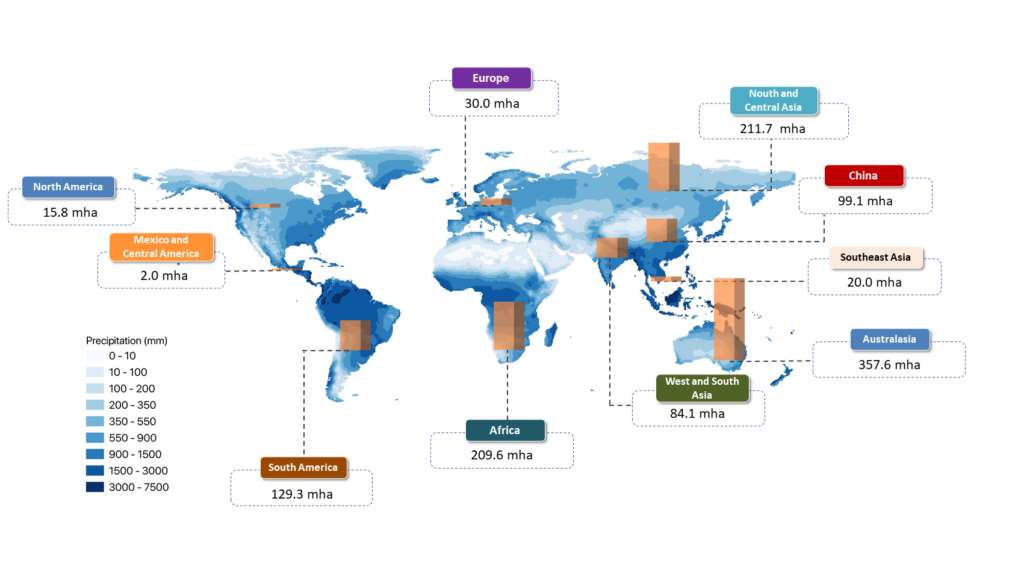
Soil leaching through subsurface drainage systems has been widely adopted to ameliorate saline soil (Figure 2a). This method flushes excessive salt from upper soil to lower layers with fresh or brackish water, and remove saline waterthrough underground drains to lower soil salinity. However, spatial disparities exisit in efficiency of the leaching. Areas vertically above the drains often evidently outperforms the parts between adjacent drains (see Figure 2a). For further desalinization, the leaching process has to continue for a long time after the soil closer to the drains has been desalinized, which is going to use an unnecessarily large amount of water.
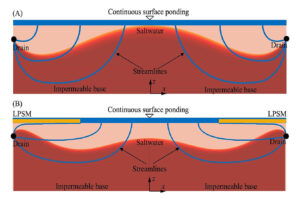
Based on studies of seepage characteristics of the subsurface drainage system, Zhang et al (2022) proposes a new approach to improve the leaching efficiency of the method, which applies a low-permeability surface mulch (LPSM) above the subsurface drains (see Figure 2b). Laboratory experiments and numerical simulations show that, with the application of LPSM, the time and water consumption of leaching could be reduced by up to 60% and 80% respectively compared to the traditional method without LPSM (see Figure 3). Data analysis also reveals that the application of LPSM not only increases infiltration in soil distant from the drains, but also raises pore-water velocities in the area closer to the drains and thereby significantly improves leaching efficiency.
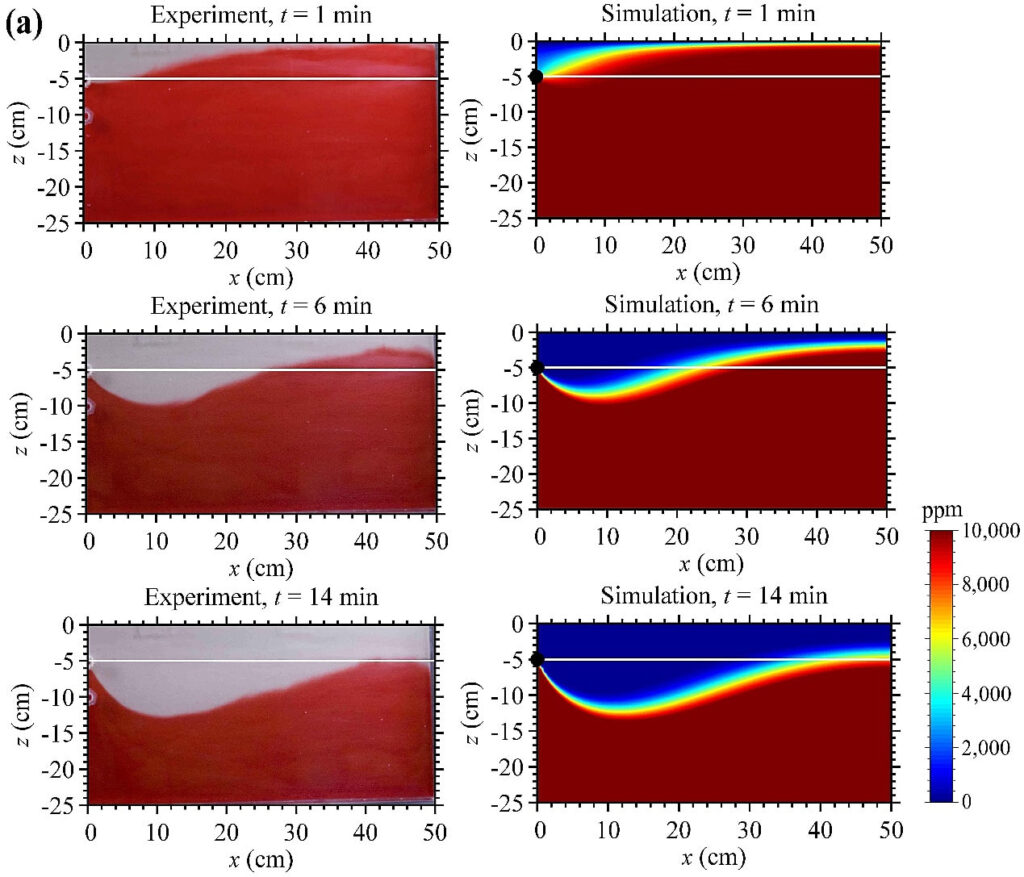
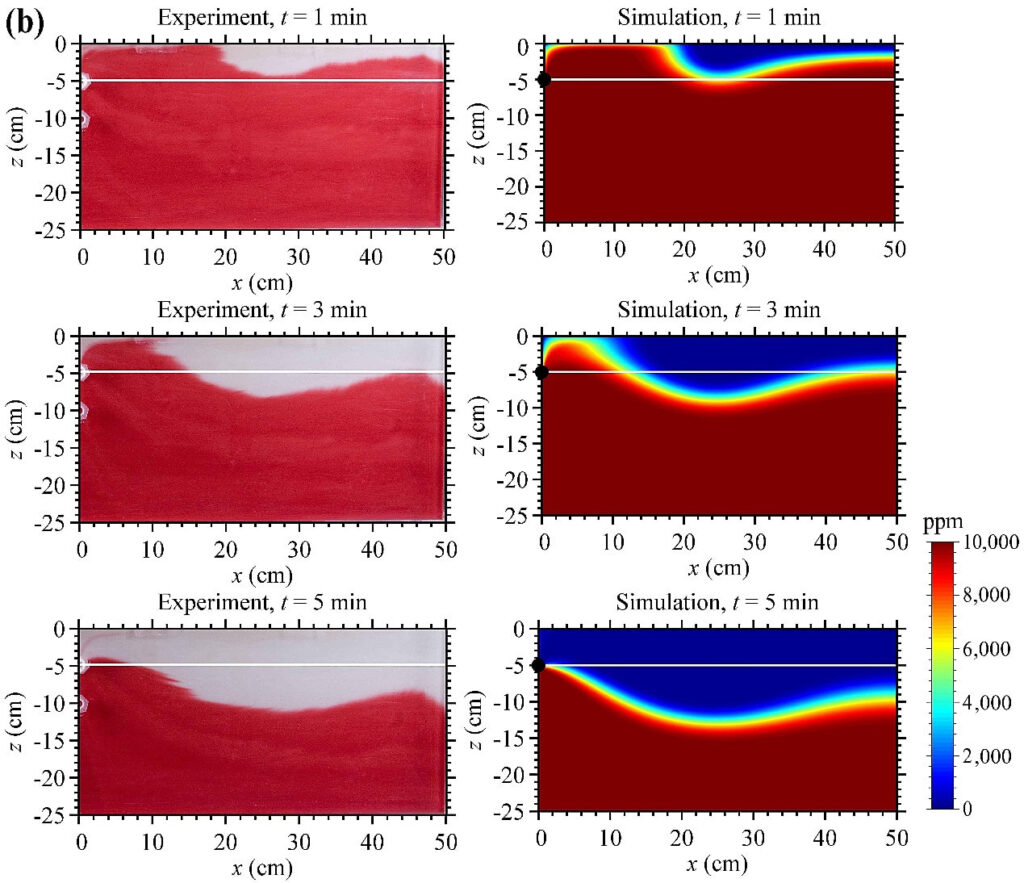
Existing field studies estimate that, with the traditional leaching method, 5,400 to 9,000 cubic meters of water is required for the amelioration of every hectare of salt-affected land. Bases on this, water consumption with the proposed method could be significantly cut down to 1,080 to 1,800 cubic meters per hectare. Apart from that, the application of LPSM could take advantage of readily available geomembrane and exisiting machinery, and therefore is believed to be worthwhile for further studies in actual production.
Full Paper
- Zhang, J., Werner, A.D. and Lu, C. (2022) “Improving salt leaching efficiency of subsurface drainage systems using low-permeability surface mulch,” Advances in water resources, 162, p. 104147. Doi: 10.1016/j.advwatres.2022.104147.

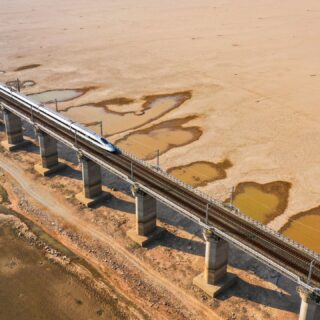


One thought on “Low-permeability surface mulch for higher soil leaching efficiency”
Nice work.